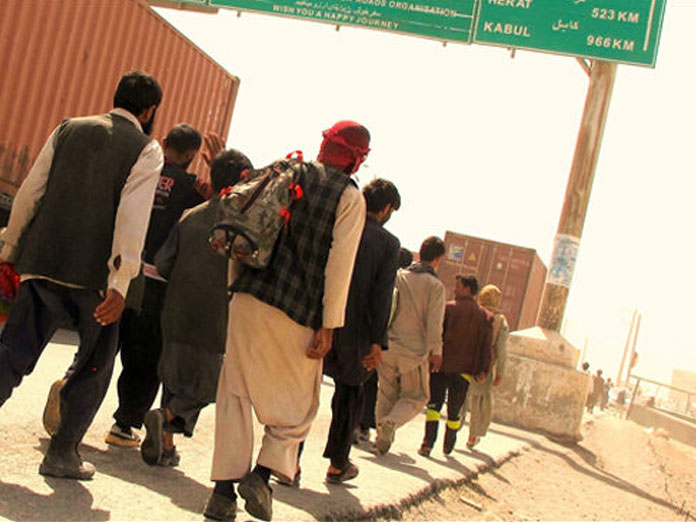Live
- KKFI unveils trophy, mascots for inaugural Kho Kho World Cup
- Man Arrested for Harassing TV Junior Artiste in Jubilee Hills
- Indian tech industry grows 3.8 pc at $254 billion in FY24, employs 5.43 million people
- 'I could have also built a Sheesh Mahal for myself', PM Modi takes swipe at Kejriwal
- Northern Railway announces train timings for Katra-Srinagar route
- Will be long and difficult for Rohit to play Tests again, says Ponting
- First Yellow Line train to be dispatched from Bengal on Jan 6
- More than 400 buildings to be affected
- India’s office lease market zooms to record high, Bengaluru leads: Report
- No update given by govt, says victim’s sister
Just In

The flow of Afghans forced to leave Iran turned into a flood in 2018, with a record nearly 800,000 coming back as renewed US sanctions sent the Iranian currency into freefall and fuelled inflation
Herat: The flow of Afghans forced to leave Iran turned into a flood in 2018, with a record nearly 800,000 coming back as renewed US sanctions sent the Iranian currency into freefall and fuelled inflation.
The 773,125 voluntary returnees and deportees was 66 percent more than in 2017 and the trend is expected to continue, said Laurence Hart, the International Organization for Migration's (IOM) chief of mission in Afghanistan. "The reason why people are coming back is because of the reduced economic opportunities in the region... including Iran," Hart told AFP. The 2018 figure was the highest since the IOM began systematically recording the volume of returnees to Afghanistan in 2012.
In contrast, just under 33,000 Afghans came back from Pakistan, where many have lived since fleeing the Soviet invasion of 1979. Desperate Afghans have been paying smugglers to cross the porous border with Iran for years in search of work to support struggling families. Smugglers can charge $300-$500 per person, turning it into a multi-million industry. An estimated 1.5 million to two million "undocumented" Afghans are in Iran, the United Nations' refugee agency said in September, citing government estimates. Another one million are registered as refugees. Many of the families of migrants are farmers who have been suffering through Afghanistan's worst drought in living memory, compounding the misery caused by 17 years of conflict and underscoring their reliance on the remittances.
"There were no jobs in Afghanistan so I had to go to Iran for work," said Mohammad Sarwar, 39, who worked as a labourer for four months before he was arrested by Iranian police and deported. "If I can make some money here, I will never go back to Iran," he said at the IOM's busy transit centre in the western Afghan city of Herat, roughly 140 kilometres from the border. Abdul Hakim, 28, had just found a job in Iran after a month of searching when he was detained and kicked out. He faces an uncertain future as he tries to find a way to support his wife and three young children. "The situation is very bad in Afghanistan," said Hakim, who comes from the northwestern province of Badghis, which has been hit hard by the drought. Some, like 75-year-old Naseruddin, who only gave one name, have returned to Afghanistan penniless. "I was there for five months but the police caught me," he said.
"I have no money on me." Nearly half of the returnees -- 358,065 -- volunteered to come back to Afghanistan after watching their earnings shrivel up and jobs disappear. Iran's rial lost around half its value against the dollar last year after US President Donald Trump pulled out of the 2015 nuclear deal. That move triggered a reimposition of tough sanctions on the Islamic republic, which have exacerbated the country's economic problems.

© 2024 Hyderabad Media House Limited/The Hans India. All rights reserved. Powered by hocalwire.com







